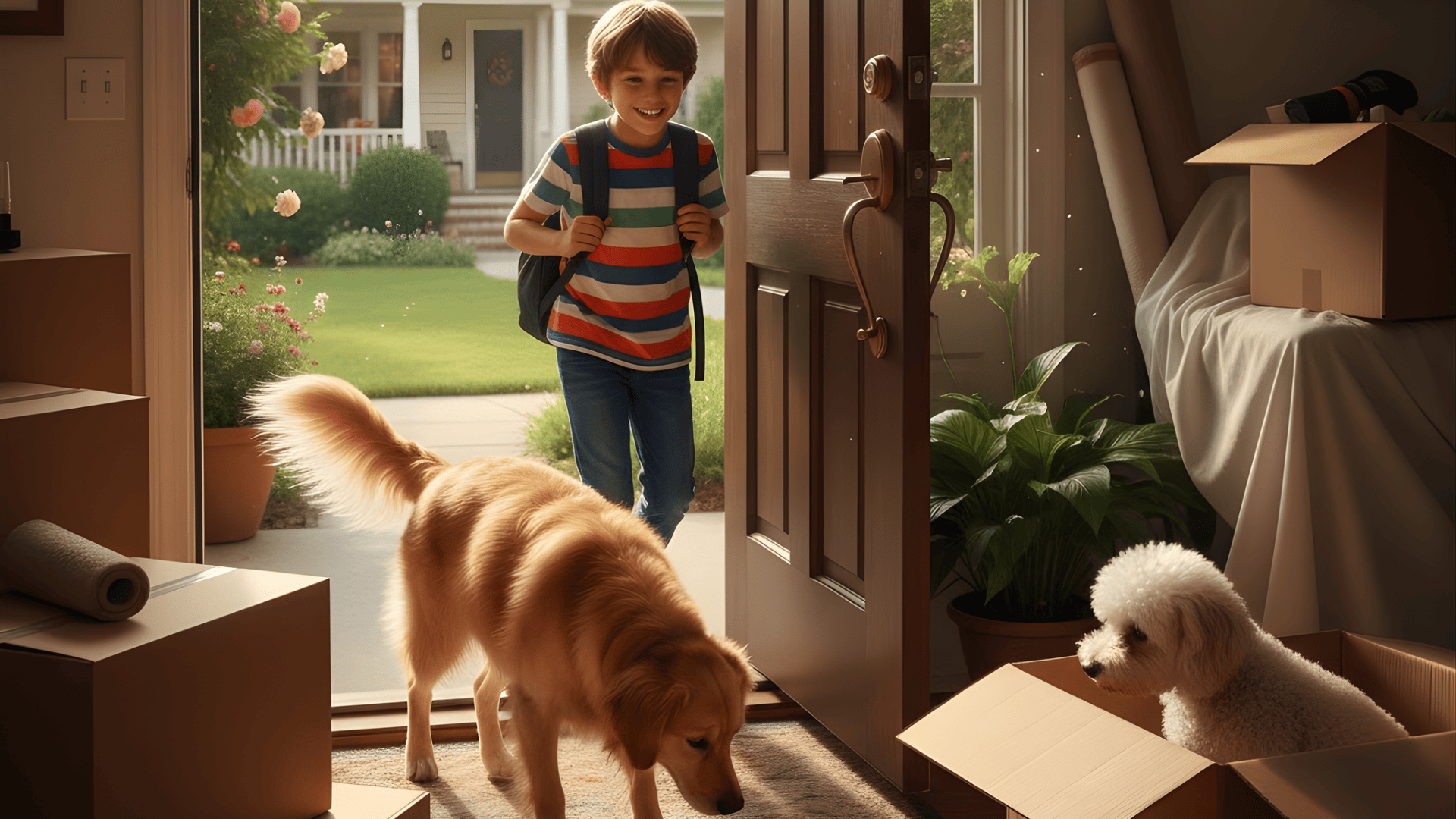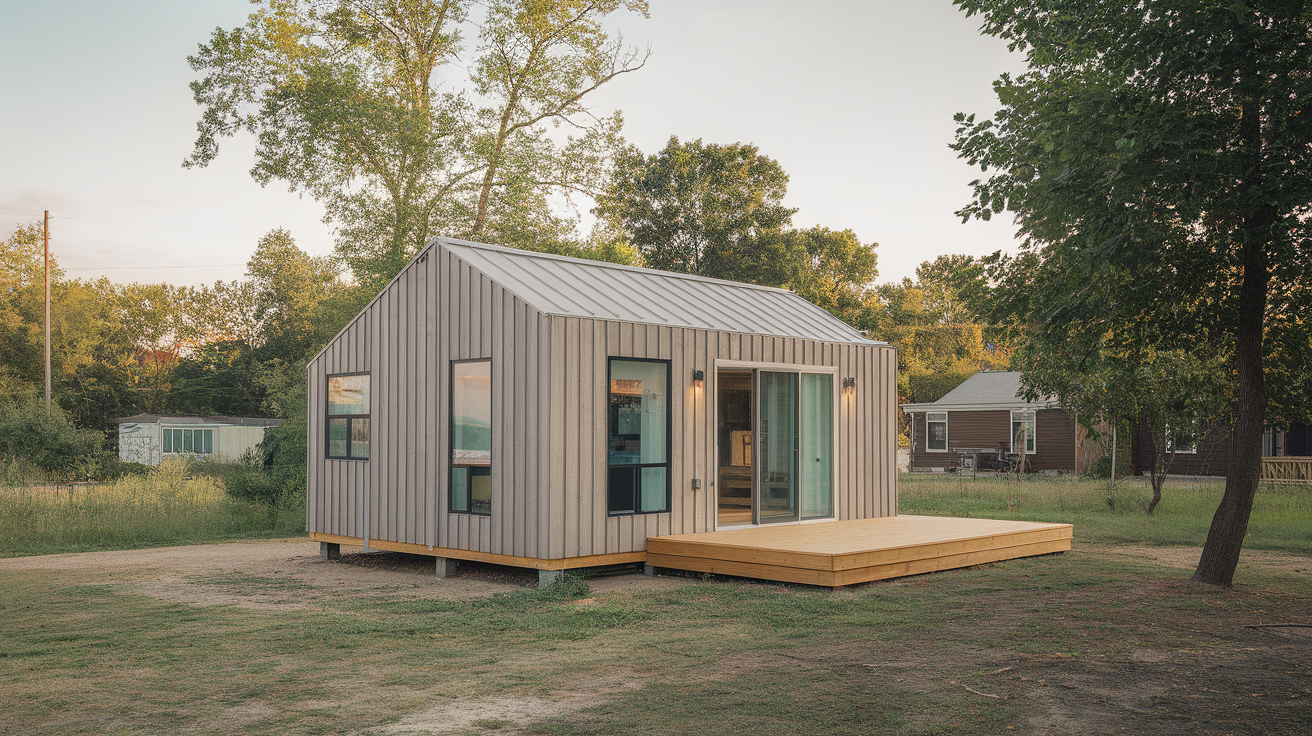Moving with pets can feel like handling two major changes at once: managing your own move while keeping your furry or scaly friend comfortable throughout the process.
Pets are sensitive to changes in their surroundings, so creating a steady, reassuring environment is key. A new home brings unfamiliar smells, sounds, and spaces that can make them uneasy at first.’
Keeping familiar routines, packing their favorite items, and allowing gradual introduction to the new space can make a big difference in how smoothly they adjust.
In this blog, I’ll walk you through practical ways to prepare and settle in with your pet, ensuring the move feels safe and stress-free for both of you.
Traveling With Pets: Tips for a Smooth Journey
Traveling with pets takes extra care and planning to make sure they stay comfortable and relaxed on the journey. Here’s how to plan ahead and make travel smoother for both you and your pet
Before the Move
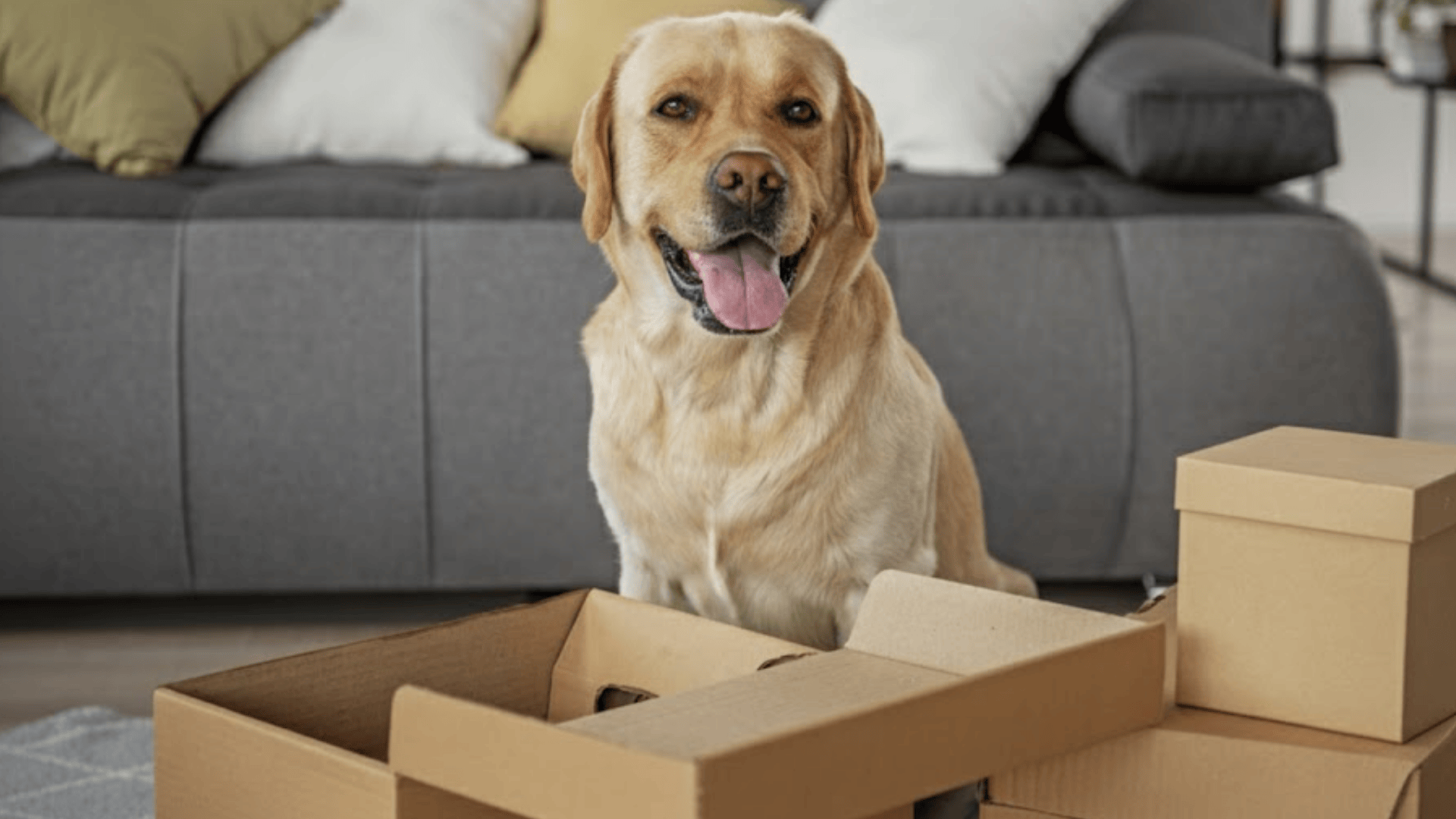
Moving can be stressful for pets, so start preparing early. Small changes and familiar routines make a big difference in keeping them comfortable.
1. Keep Routine Stable
Pets feel most comfortable when their days follow a familiar rhythm. Keep their meal times, walks, and play sessions the same, even when the house starts filling with boxes.
A steady routine gives them a sense of safety and reassurance. The more predictable their day feels, the easier it will be for them to adjust as things change.
2. Get Your Vet’s Input
Book a vet visit a few weeks before moving day to make sure your pet is healthy and ready for travel. Use the appointment to update vaccinations, refill prescriptions, and get travel certificates if you’re crossing state or country lines.
Your vet can also recommend relaxation aids, motion sickness remedies, or helpful tips to make the trip easier for your pet.
3. Update Identification
Before the move, check that your pet’s ID tags, collar, and microchip details include your new contact information. Pets can sometimes slip away during a move, and having accurate details makes it easier to bring them home quickly.
Keep a digital copy of their medical records and a recent photo on your phone for easy access while traveling.
4. Pack a Pet Essentials Bag
Prepare a small bag with your pet’s daily necessities: food, bowls, water, leash, toys, blanket, and medications.
Keeping these items within reach saves time and helps you maintain your routine while traveling or unpacking. It also ensures they have everything familiar close by during the transition.
5. Introduce Moving Supplies Early
Set out moving boxes, tape, and carriers a week or two before packing begins. Allow your pet to sniff and get used to them so they become comfortable with these new items.
This early exposure helps reduce fear and nervousness on moving day when the environment gets busier and more active.
On Moving Day
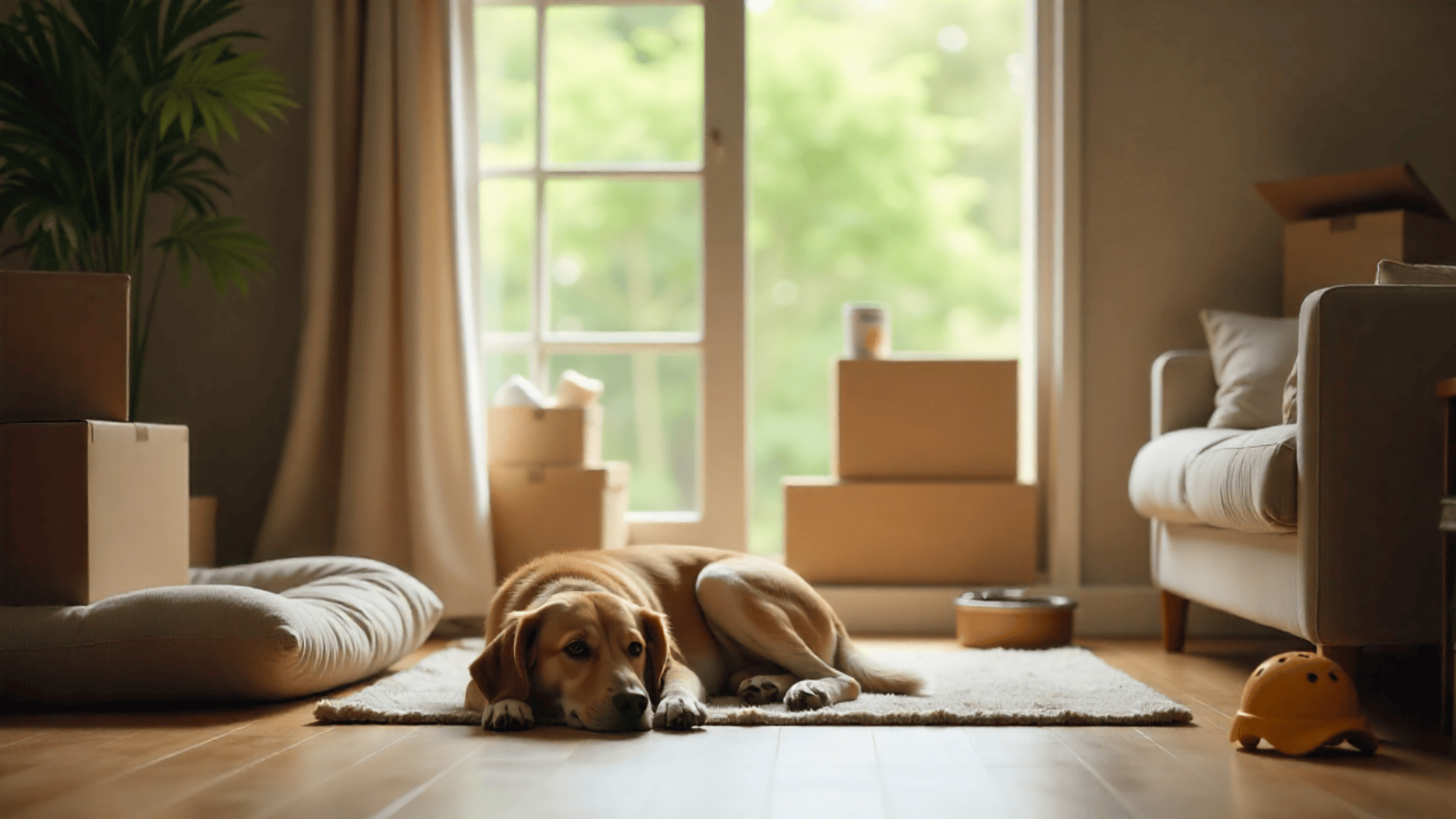
Moving day can be chaotic, filled with noise and constant activity. Keeping your pet safe, composed, and secure helps prevent stress and accidents.
6. Create a Safe and Quiet Space
Prepare a separate room or enclosed area for your pet on moving day, away from the noise and activity of packing and loading.
Add familiar items like their bed, toys, and water bowl to help them feel secure. This protected space prevents them from getting startled or slipping out through open doors during the commotion.
7. Secure Carriers and Harnesses
Choose a sturdy, well-ventilated carrier or a crash-tested harness for travel. Double-check that it’s safely fastened in the car to prevent it from sliding or tipping during sharp turns or sudden stops.
A properly secured setup helps keep your pet safe and comfortable throughout the ride.
8. Use Comfort Aids if Needed
If your pet tends to get nervous, try using pheromone sprays, soft background music, or vet-approved relaxing products.
These gentle aids can ease tension and make the moving process smoother for them. Always test new products before traveling to ensure they respond well.
9. Keep Daily Routines Consistent
Stick to your pet’s usual feeding, walking, and playtime schedule as much as possible. Familiar patterns provide reassurance when everything else feels unfamiliar.
Even short breaks for play or cuddles can help them stay balanced and adjust more easily during the day’s activity.
Traveling With Pets

Whether you’re driving or flying, travel requires thoughtful planning to keep your pet safe, relaxed, and comfortable during the journey. A bit of preparation can make a big difference in how smoothly things go.
10. Plan Road Trips with Care
If you’re driving to your new home, schedule breaks every few hours so your pet can stretch, drink water, and use the bathroom.
Keep them secure with a seatbelt harness or crate that’s firmly positioned in the car. Always bring extra water and snacks, and never leave your pet alone inside the vehicle, even for a short time.
11. Follow Air Travel Requirements
Before flying, review your airline’s pet policy carefully. Check carrier size limits, fees, and the health paperwork required for boarding.
Some airlines have temperature or seasonal restrictions, so confirm these details early and again just before your trip. This preparation helps avoid last-minute surprises and ensures your pet travels safely.
12. Choose Reliable Pet-Friendly Lodging
When your trip involves an overnight stay, look for hotels or rentals that clearly allow pets. Use trusted booking apps or verified websites to find places that suit your pet’s needs.
Confirm any extra charges or breed restrictions in advance so you can arrive stress-free and focus on helping your pet settle for the night.
13. Arrange Long-Distance Relocation Support
For cross-country or international moves, it can be helpful to work with professional pet relocation companies. They manage the entire process from health certificates and carrier specifications to travel coordination and customs paperwork.
Their expertise ensures your pet’s move is safe, organized, and compliant with all regulations.
Arriving and Settling Into a New Home
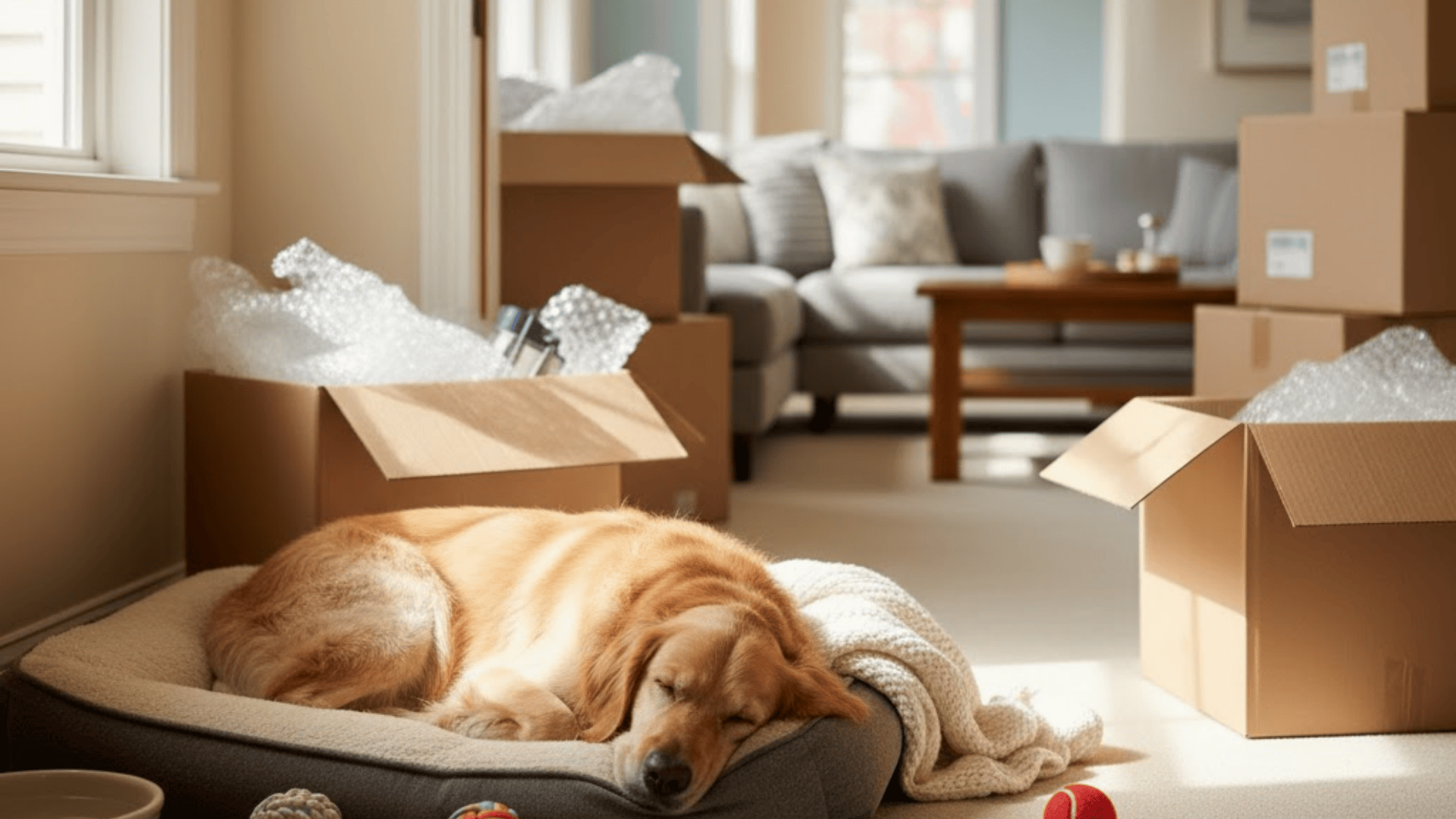
Once you arrive, give your pet time to adjust to their new surroundings. Familiar items, patience, and a composed environment will help them feel safe and comfortable.
14. Introduce New Spaces Gradually
When you arrive at your new home, allow your pet to only go to one room at a time instead of the entire house.
Gradual introductions help them feel safe and confident as they get used to unfamiliar scents and sounds. Expanding their space slowly prevents stress and helps them adjust at their own pace.
15. Set Up Familiar Items Right Away
Unpack your pet’s bed, bowls, and toys as soon as possible. Having familiar scents and favorite belongings around helps them recognize the new space as their own.
This sense of familiarity makes it easier for them to settle and feel at ease in the new environment.
16. Watch for Signs of Stress
Observe your pet closely during the first few days after the move. Behaviors such as hiding, skipping meals, or having accidents may show they’re feeling uneasy.
Offer quiet comfort, speak gently, and give them time to feel secure in their surroundings before expecting them to act normally again.
17. Reestablish a Steady Routine
Once you’re unpacked, return to your pet’s regular feeding, walking, and play schedule. Familiar daily patterns help them adjust more easily and feel reassured in their new home.
Consistency gives them structure, helping restore balance and comfort after the move.
Special Considerations
Every pet has unique needs, and some require a little extra attention during a move.
- Moving With Multiple Pets: Give each pet its own crate, feeding area, and rest space. Separating them during travel prevents stress, fights, and tension caused by close confinement.
- Exotic and Small Pets: Birds, reptiles, and small mammals require controlled temperatures and proper ventilation. Use secure, padded carriers and bring familiar bedding or materials to help reduce stress during transport.
- Military or International Moves: Research destination-specific pet regulations early. Some countries or bases require vaccinations, microchips, or quarantine periods. Check the USDA APHIS website and consult your vet for updated travel requirements.
- Senior or Special-Needs Pets: Older pets or those with medical issues may need ramps, soft bedding, or frequent breaks. Keep medications clearly labeled and accessible, and ask your vet for tips on ensuring a safe, comfortable move.
No matter the situation, a bit of extra care and planning goes a long way in keeping your pet safe and happy during the move.
Trusted Pet Relocation Services in the USA
These reliable U.S.-based companies help make pet transport safe, organized, and worry-free — whether you’re moving across town or to another country.
PetRelocation is a full-service company that handles everything from vet paperwork and health certificates to flight arrangements and customs clearance.
They specialize in both domestic and international pet moves, ensuring your pet’s travel meets all airline and country regulations.
Global Pet Relocation offers door-to-door service with experienced handlers and optional “pet nanny” escorts. They manage long-distance and overseas relocations, keeping you updated throughout your pet’s journey.
AirPets International provides nationwide and global transport with veterinary oversight and personalized care. Their service includes real-time tracking, comfort breaks, and medical supervision for anxious or senior pets.
Each of these services focuses on comfort, safety, and compliance – making your pet’s relocation smooth from pickup to arrival
Important Legal and Policy Requirements
Before moving with your pet, it’s important to understand the legal and policy rules that apply to your new location.
- Local Registration Requirements: Many cities require pets to be licensed or registered within a set time after you move. Contact your new local animal control or city office to confirm deadlines and fees.
- Neighborhood or HOA Rules: Some communities or apartment complexes have breed, size, or number limits for pets. Reviewing these policies early helps avoid housing conflicts.
- Transportation Regulations: If you’re using movers, airlines, or shipping services, review their pet transport policies. Rules on crate size, labeling, and check-in timing vary widely.
- Cross-Border and Import Laws: When moving abroad, verify the entry laws for pets in your destination country. Certain regions require waiting periods, import permits, or rabies antibody tests before entry.
- Animal Welfare Compliance: Check that your move meets animal welfare standards such as safe containment, humane travel conditions, and adequate rest breaks, especially for long-distance journeys.
Taking care of these legal details ahead of time keeps your move smooth, compliant, and stress-free for both you and your pet.
Conclusion
Moving into a new home can be exciting, but pets often need time to feel comfortable in a new setting.
Give them space to settle at their own pace and keep daily routines steady to provide reassurance. Familiar items, gentle attention, and consistent care help them adjust more easily and feel secure.
Every pet reacts differently, so patience and small comforting gestures make a big difference.
Ready to make your next move easier? Start planning early and create a comforting setup so your pet feels safe, happy, and truly at home from day one.

